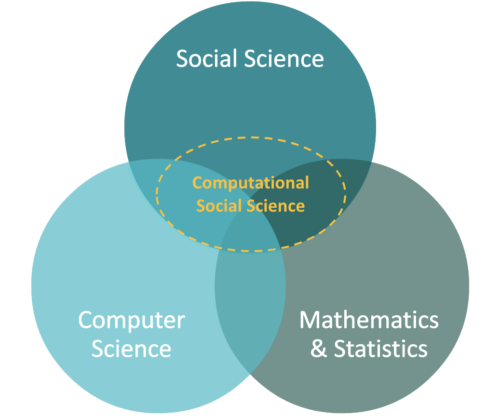December 3, 2023
First steps: Starting my Master of Computational Social Sciences
Computational what? That has so far been the most common reaction I received when telling people about my master’s studies. So if you are curious about what my study program is all about, let’s have a deep dive into it.

First of all, the name of the master’s program is a merger of two words, computer science, and social science, which already gives an idea about the program’s aim: combining social science with computer science to foster new insights. However, apart from those two academic disciplines the program also draws on input from mathematics and statistics, resulting in an interesting combination.
The master’s comprises 120 ECTS over 2 years, with 30 ECTS per semester. The program’s structure consists of courses on statistics and social science research in the first semester, followed by courses on methods for computational research in the second semester. The third semester is focused on applying those methods to different fields, and the fourth semester is exclusively comprised of the master’s thesis.
 Each semester is split into two terms featuring only two courses with 7.5 ECTS each: one course from social sciences and one about statistics and data science. Still surprising for me is that lectures only make up a small amount of my study time. So far, most of the time, I only had one 1,5 h lecture per day, and the rest of the time was focused on self-studying and reading.
Each semester is split into two terms featuring only two courses with 7.5 ECTS each: one course from social sciences and one about statistics and data science. Still surprising for me is that lectures only make up a small amount of my study time. So far, most of the time, I only had one 1,5 h lecture per day, and the rest of the time was focused on self-studying and reading.
Coming from a Bachelor’s in International Relations, I particularly chose this master’s as I wanted to learn more about how to do research based on new computational methods and I felt like I was missing some hands-on skills to analyze data. So far, I felt like the program’s structure really encourages you to apply the methods learned to your area of interest.
What I especially like about the program structure at Linköping University is that the program is open to people from a variety of social science and technological academic backgrounds, as well as students from different countries, which makes our class very diverse.
Further, I really like the structure of the master which only features two courses, one with a focus on Statistics and Programming in R and one with a focus on Social Sciences at the same time for a period of 2 months. After completing these, you move on to the next two courses, so no more exam periods covering an insane amount of subjects!
I hope you enjoyed that short insight into my study program, and talk to you soon!
Love -Barbara




